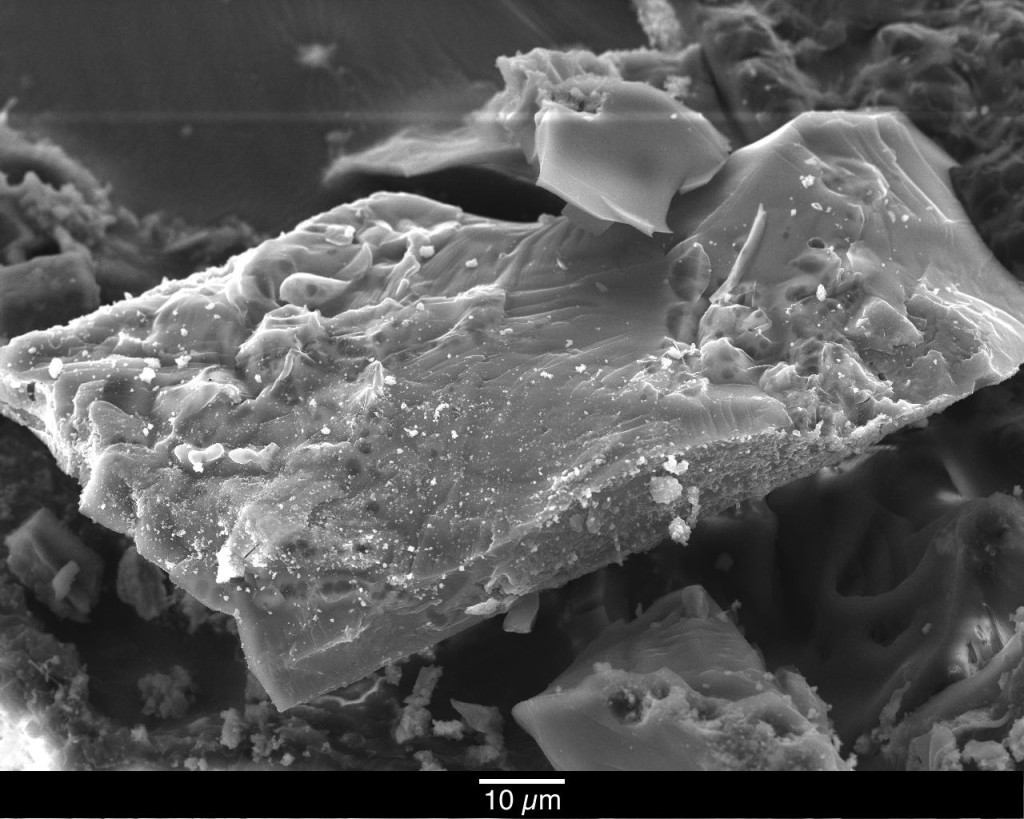Advances in Space Research, vol. 56, no. 11 (2015):2402-2427.

Abstract
This paper presents evidence of the first detection of interstellar dust in ice age polar ice. Neutron activation analysis (NAA) results are reported for 15 elements found in dust filtered from eight samples of Camp Century Greenland ice dating from 40 to 78 kyrs BP. High concentrations of Sn, Sb, Au, Ag, Ir, and Ni were found to be present in three out of these eight samples. One compositionally anomalous dust sample from an ice core depth of 1230.5 m (age ∼49 kyrs BP, near the beginning of D/O stadial No. 13) was found to contain tin with an average weight percent of 49% as determined by energy dispersive X-ray analysis (EDS). This sample was also found to contain high concentrations of Pb with an average weight abundance of 8.4% and matching the Sn:Pb ratio observed in interstellar spectra. Dust particles in this sample generally have a platy morphology and range from submicron size up to a size as large as 120 μm, a particle consisting almost entirely of SnO2 and being the largest monomineralic extraterrestrial dust particle so far discovered. One porous aggregate tin-bearing particle was found to contain nanometer sized chondrules indicating an extraterrestrial origin. The extraterrestrial origin for the tin is also indicated by the presence of isotopic anomalies in the 114Sn, 115Sn and 117Sn isotopes. Follow up isotopic measurements of this tin-rich dust need to be performed to improve confidence in the anomalies reported here. High abundances of the low melting point elements Ag, Au, and Sb are also present in this tin-rich sample along with elevated abundances of the siderophiles Ir, Ni, Fe, and Co, the latter being present in chondritic proportions and indicating that about 9% of the dust has a C1 chondrite component. Measurements indicate that about 97% of this dust is of extraterrestrial origin with a 3% residual being composed of terrestrial windblown dust. EDS analysis of another tin-rich Camp Century ice core dust sample dating to ∼130 kyrs BP was found to contain tin-rich particles with a similar platy morphology and to have Sn and Pb weight abundances averaging 39% and 7.5% respectively, again approximating the interstellar Sn:Pb ratio. The relative absence of cosmic microspheres and the unmelted appearance of the tin-rich particles in both of these samples suggests that these particles entered the Earth’s atmosphere at low velocity, implicating a gradual accumulation of dust from a dispersed state in the near Earth space environment. The unusual enhancement of Sn and Pb could be explained if these dust particles were originally present in the solar system’s interstellar environment in a superconducting native metal state and were preferentially concentrated through Meissner effect forces by the passage of cosmic ray driven hydromagnetic shocks which may also have transported them into the solar system. The 49 kyrs BP event is estimated to have lasted over 6 years and to have deposited dust onto the Earth at a rate 104-105 times higher than present rates. This had a significant cooling effect on climate and resulted in a transient 33 fold increase in snow accumulation. Future discovery of these events in ice cores at other locations should void any lingering thoughts that this heavy metal enhancement may be due to sample contamination.
Download: ASR-2015.pdf (File size: 5 MB)